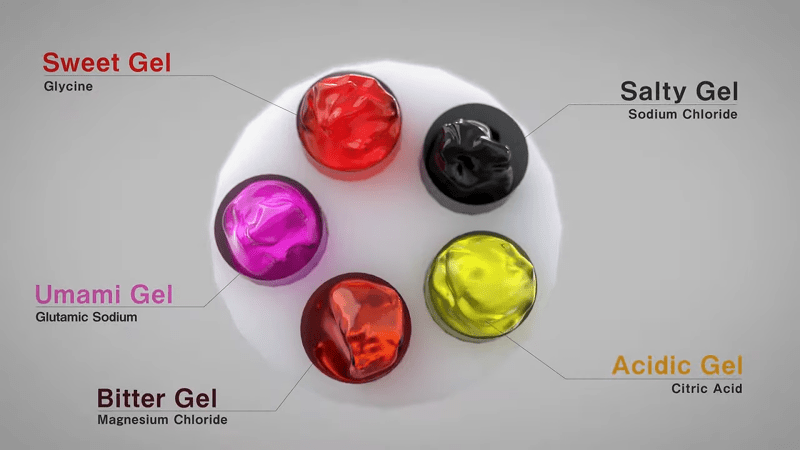We have headphones for your ears, and monitors for your eyes. Some computers even have tactile feedback. Now researchers have an output device for taste. The decidedly odd device uses five gels, one for each of the tastes humans can sense. If we understand the paper, the trick is that ionizing the gels inhibits the taste of that gel. By controlling the ionization level of each gel, you can synthesize any taste, just like you can make colors with three LEDs.
The five gels are made from agar and glycine (sweet), magnesium chloride (bitter), citric acid (acidic), salt (salty), and glutamic sodium (umami). If you didn’t learn about umami in school, that’s a savory taste likened to the taste of a broth or meat and often associated with monosodium glutamate.
The shape of the device is made like a sushi roll so that while the gels contact the tongue, a copper foil cathode can connect also. Using this will make you look even stranger than someone wearing Google Glass, but that’s the price of being on the cutting edge of technology, we suppose. There doesn’t seem to be any reason you couldn’t duplicate something like this, although we wonder about the hygiene of passing it around at parties. Maybe your next home movie could show a meal and let the viewer taste it too.
If you are wondering about smell, that’s another set of researchers. You would think this is the first taste output device we have seen, but no… surprisingly, it isn’t.















This is very interesting, but of course a taste (the perceived experience of something put in mouth) involves much more than the gustatory system (which is targeted by that device). The olfactory system is much more important, and feeling the texture also plays a role.
“By controlling the ionization level of each gel, you can synthesize any taste, just like you can make colors with three LEDs.” Kinda sounds like bs to me. There are many organic substances (molecules) that are responsible for specific tastes and aromas, such as amines , esters, etc.
https://en.wikipedia.org/wiki/Aroma_compound
Well, if it sounds like BS, that is because it is bovine feces.
The basic tastes are only a minor element in the total sensation of taste. Most of it is olfactory.
That is why food tastes so bland when you have a cold: with your nasal passage blocked, most of the olfactory sensations are gone and you only taste the five basics.
When you don’t have a cold, you can enhance tasting by “retronasal tasting” swallow food (or a drink, professional wine tasters do this) and exhale through your nose. This sometimes brings out extra depths of flavour.
And someone will use it to troll people with the taste of poop.
I wonder if that’s one of those things that has a close parallel with something we find delicious, like with cheese and vomit. I wouldn’t want to be the person finding out first hand… or first mouth.
Comments on the video have been turned off.
I can only begin to imagine what people would say.
No thank you.
Gives a whole new perspective to telepresence. Here, taste my flavor rod.
Pretty sure glutamic sodium is monosodium glutamate.
Just what are we trying to do here? What is the constructive effect? Are we trying to give people a pleasant eating experience so they are satisfied that way without the expense of food or over-eating? It’s good science to work to understand how taste works but is this what we want? Fantasy is real enough as it is. People would never want to take the red pill.
Training for sommeliers, baristas, etc. Here’s a description of a sensory skill test for coffee professionals: https://www.home-barista.com/scaa-sensory-skills-test.html